Cat Lady, Contemplating
A political flap may draw more interest to the work of overlooked artist Cecilia Beaux
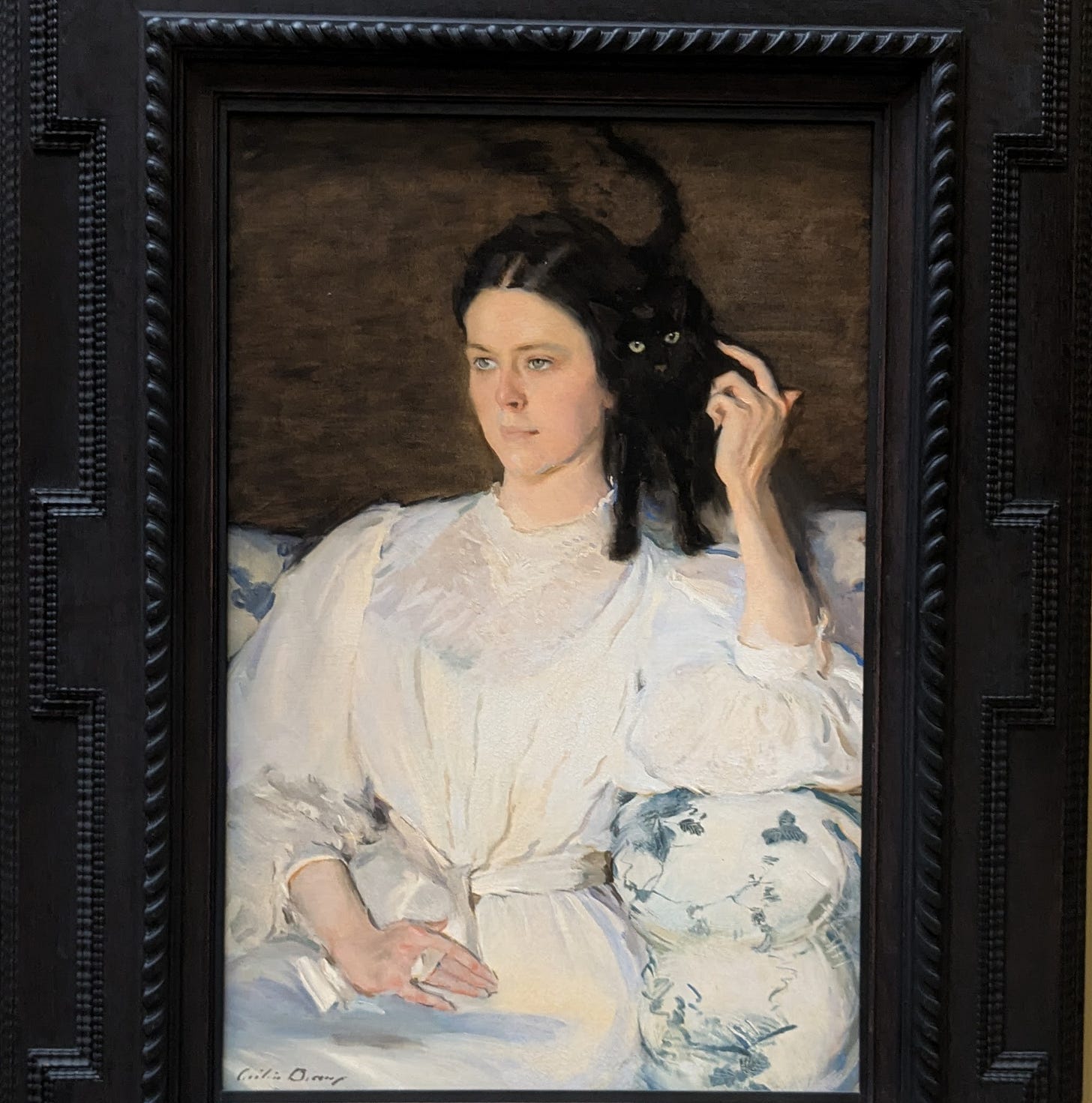
I would bet that many visitors to the National Gallery of Art in Washington, D.C., this summer give this painting a second look because it features a lady and a cat. There’s been a lot of talk about cat ladies of late due to a comment made by a politician.
But this is a painting that deserves attention at any time.
Cecilia Beaux (1855-1942) shows us a sleek little black cat staring at us with glowing green eyes.
The cat wants to know about us, why we are here. The woman in the portrait pays us no mind at all. She’s thinking her own thoughts, focused on something that’s important to her.
The painting is both a pleasure to look at for any viewer and a puzzle to be worked out for fans of art history.
For example, the little cat may seem familiar to many people.
The National Gallery of Art’s description of the painting suggests this is a reference to Edouard Manet's painting Olympia (1865, Musée d'Orsay, Paris). See the little cat at the end of the bed?
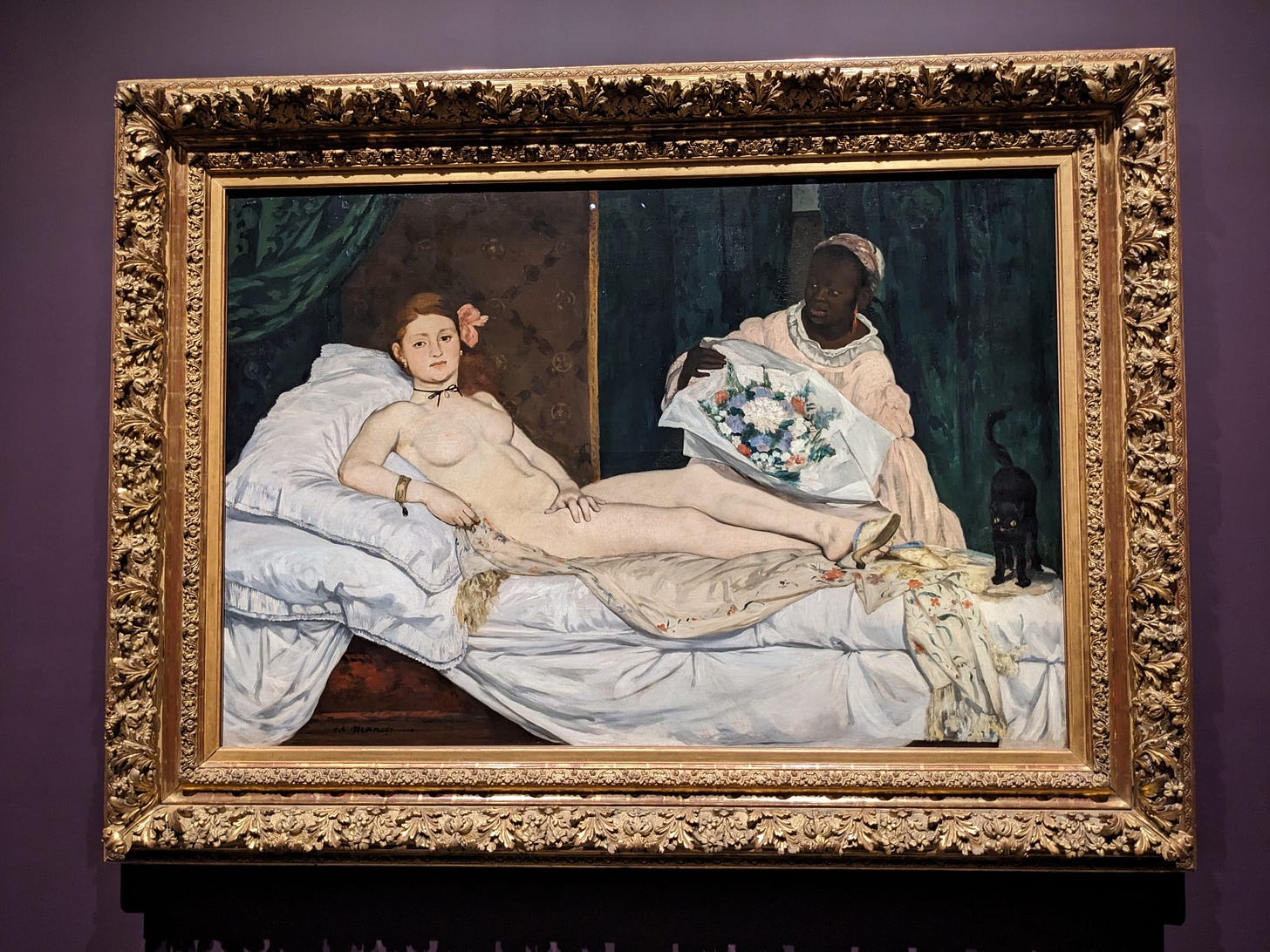
Another Manet influence may be the choice of a simple sepia-brown background for the “Sita and Sarita”painting. Manet was deeply influenced by Spanish painters, particularly Francisco de Zurbarán (1598-1664).

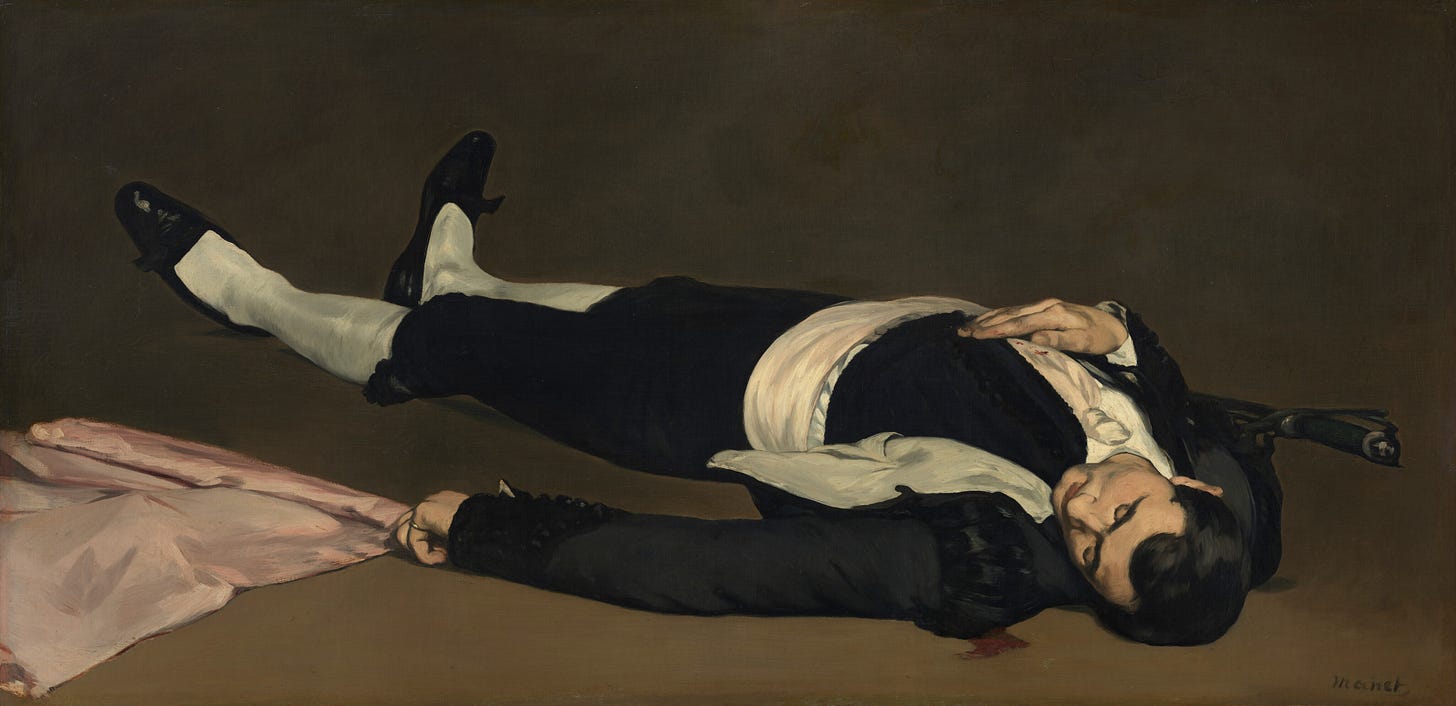
The woman in the Beaux portrait wears the brightest of white, instead of the somber earthy tones seen in many Zurbarán paintings.
In this, Beaux shows off a skill in capturing fancy white clothing that puts her in a class with her contemporaries such as John Singer Sargent (1856-1925) and James McNeill Whistler (1834-1903). Below are images of Whistler’s famous Symphony in White: The White Girl and Sargent’s portrait of Margaret Stuyvesant Rutherfurd White .
Whistler makes his famously spirited companion, Joanna Hiffernan, into a prop in his painting. There’s no more life in her eyes than in those of the taxidermied animal head at her feet.
Sargent tends to treat his portrait sitters more kindly than Whistler does. In this one, Margaret White has a mild expression, although it’s hard to read. As wonderful as he was, Sargent often seems to be more interested in light as his true subject than telling us much about the people in his paintings.
But Sarita of the Beaux painting has a story for us. We can guess she has her own views. She looks like she is trying to figure something out.
Sarita has much more in common with the women in the paintings of William Merritt Chase (1849-1916). Chase often showed in his paintings women out and about on their own, exploring their city.

Chase is said to have proclaimed Beaux to be “not only the greatest living woman painter, but the best that has ever lived.”
That seems an exaggeration, but she certainly had tremendous talent and applied it well.
Beaux gives us the material we need to tell ourselves stories about the people in her portraits. We know Sarita, who was her cousin Sarah Allibone Leavitt, is someone who can win the trust of that most intelligent creature, the cat.
And the cat in this painting also gets a proper portrait.
On a long look, Manet’s cat looks a bit like a stuffed toy, while Beaux gives us an animal we’d like to pet.
We too would like to be judged worthy of the cat’s trust. To do that is as high a compliment, after all, as the one Chase is said to have paid Beaux.
Because most cats have innate good sense about people, tending to favor those who will be kind.
To see another Beaux portrait with a feline companion, read my Medium essay, Cat Gentleman, Cat Lady.
For more on John Singer Sargent, read Florida Man .
For more on William Merritt Chase, read Portraits of Women Stepping Out Into the World .
For more on JM Whistler, read Pretty Paintings from a Petty Man .




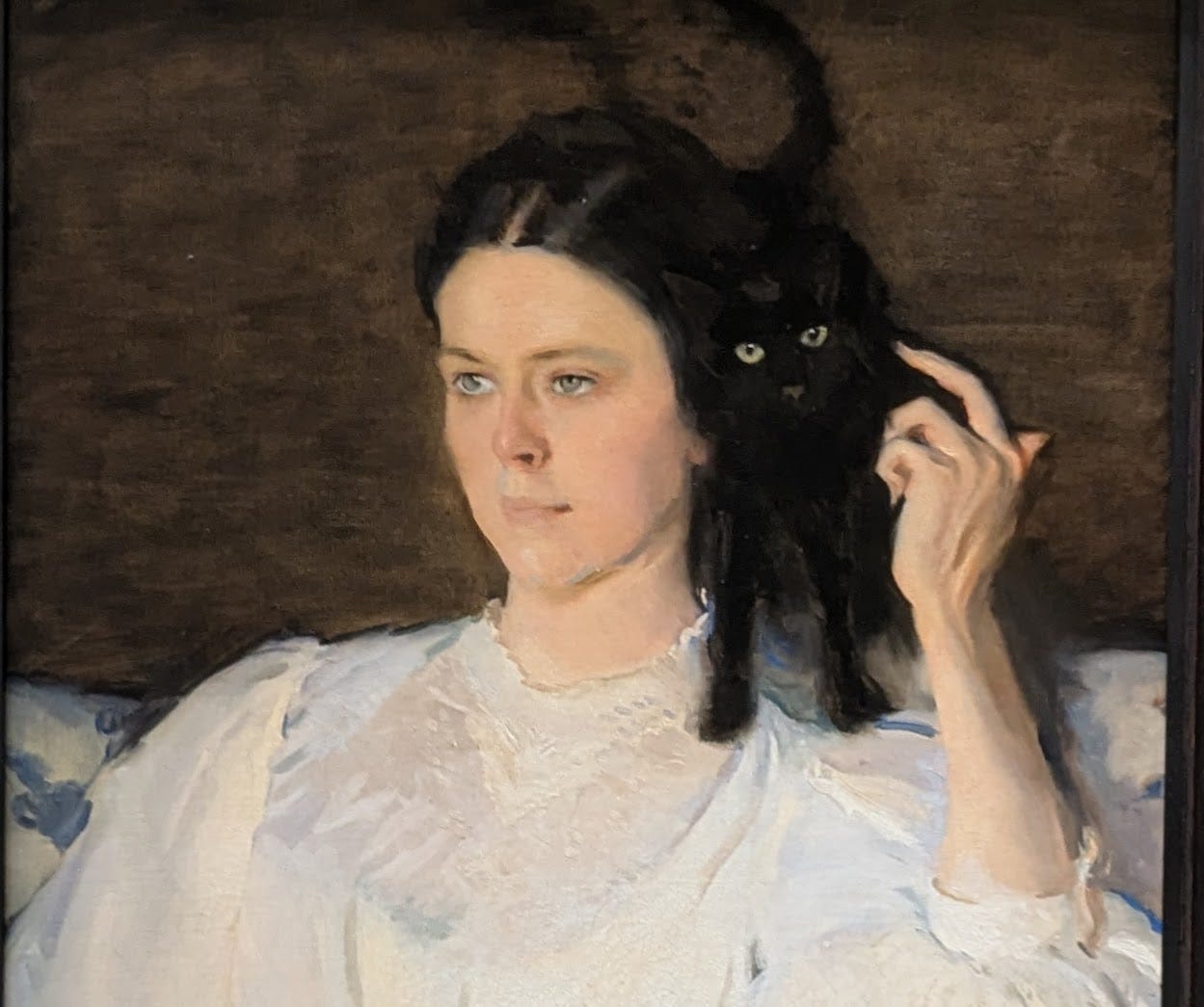

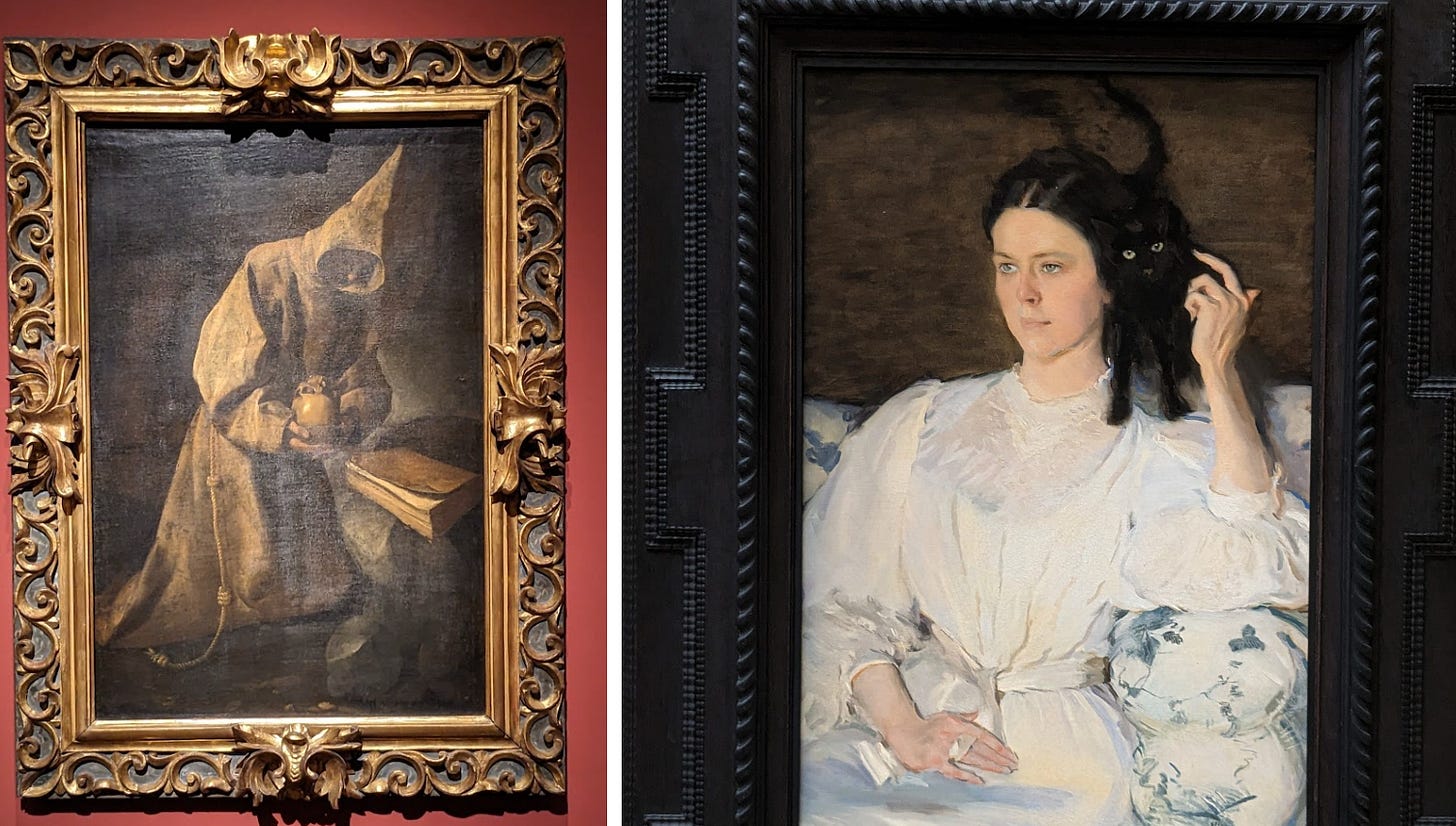



Thank you for spotlighting another talented female artist. When I looked at that painting was "that lady knows she's in control of her own destiny" That's the difference that I see in the subjects.